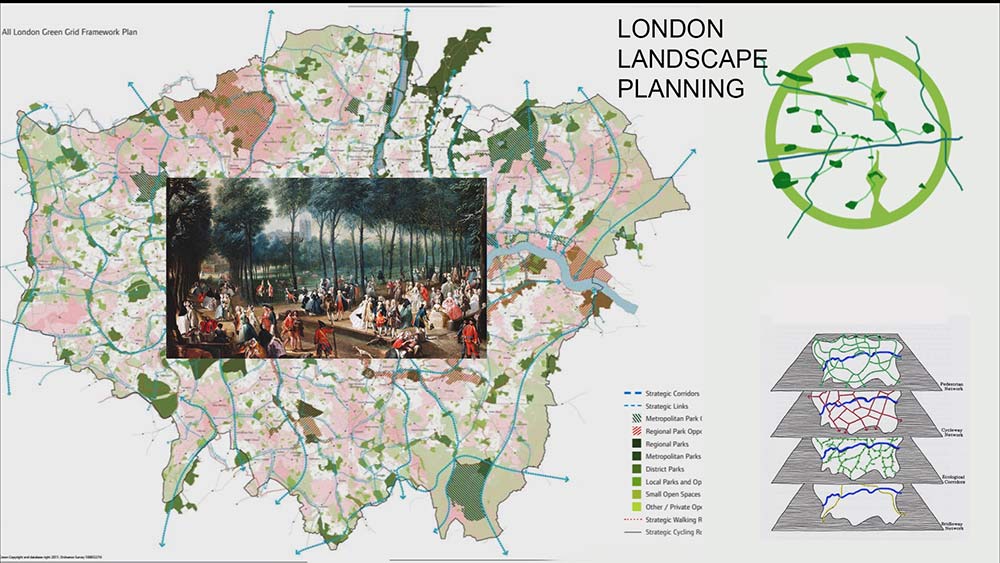Green infrastructure planning for London’s urban landscape
London has a proud tradition of planning green space in conjunction with urban development. As outlined in the above video, it includes (1) the choice of a riverside site by the Romans, (2) the fabulous network of parks planned by Henry VIII, (3) the incredibly far-sighted Breathing Zones proposal of John Claudius Loudon, (4) the influential Garden Cities vision of Ebenezer Howard, (5) the practical Green Belt planning of Raymond Unwin, (6) Abercrombie’s inspiring Park System, (7) the Metropolitan Green Belt as adopted by a group of local authorities in the South East, (8) the South London Green Chain, led by LB Greenwich and the GLC (9) LPAC’s 1991 Green Strategy, (10) the GLA’s Blue Ribbon Network, (11) the GLA’s Green Grid (12 ) the Green Infrastructure proposals in the forthcoming London Plan.
It is good that the ideas have come from many different professions but this has also resulted in terminological confusion and a consequent lack of a professional focus for implementation of the policies. At borough level, green space plans tend to be simple regurgitations of older documents. At the all-London scale the focus tends to be on new names for old policies. I’d like to see:
- landscape architects developing more expertise in green space planning while drawing on the work of engineers, architects, planners, natural scientists and social scientists.
- the ‘green’ in ‘green space’ used to mean both (1) ‘fauna and flora’ and (2) ‘environmentally good’ (as in the phrase ‘green transport’).
And what should this category of urban planning be called? ‘Green’ is almost acceptable if used in its two senses but I doubt if this is possible and the word is too descriptive to serve as a planning objective. ‘Infrastructure’ is also a utilitarian word, which is both an advantage and a disadvantage. I think of the activity as ‘landscape planning’, because the aim is to make London a great urban landscape, incorporating a wide range of aesthetic, ecological and functional objectives. At an institutional level there is a need for an organisation with the energy and expertise to advance green policy on a citywide basis. It could be a part of the GLA, equivalent to Transport for London TfL. Or the new body proposed in the 2017 Draft Environment Strategy could be made permanent. The document states that Mayor Sadiq Khan will ‘set up a London Green Spaces
Commission to roll out new ways for the Mayor, London boroughs, community groups and others to fund, manage and value green
spaces and nature’.

